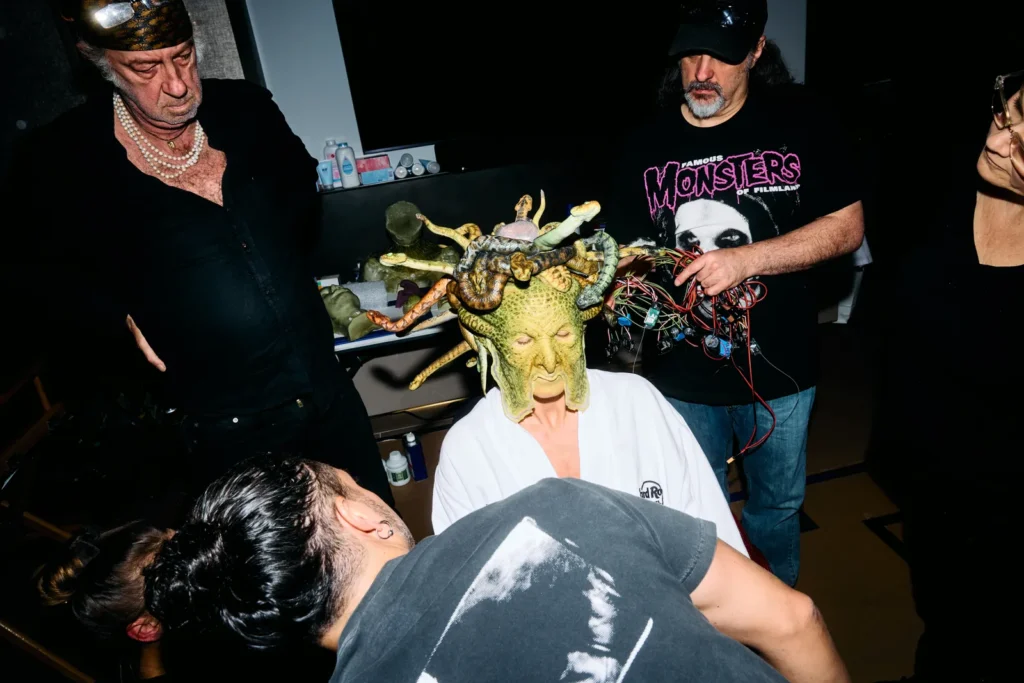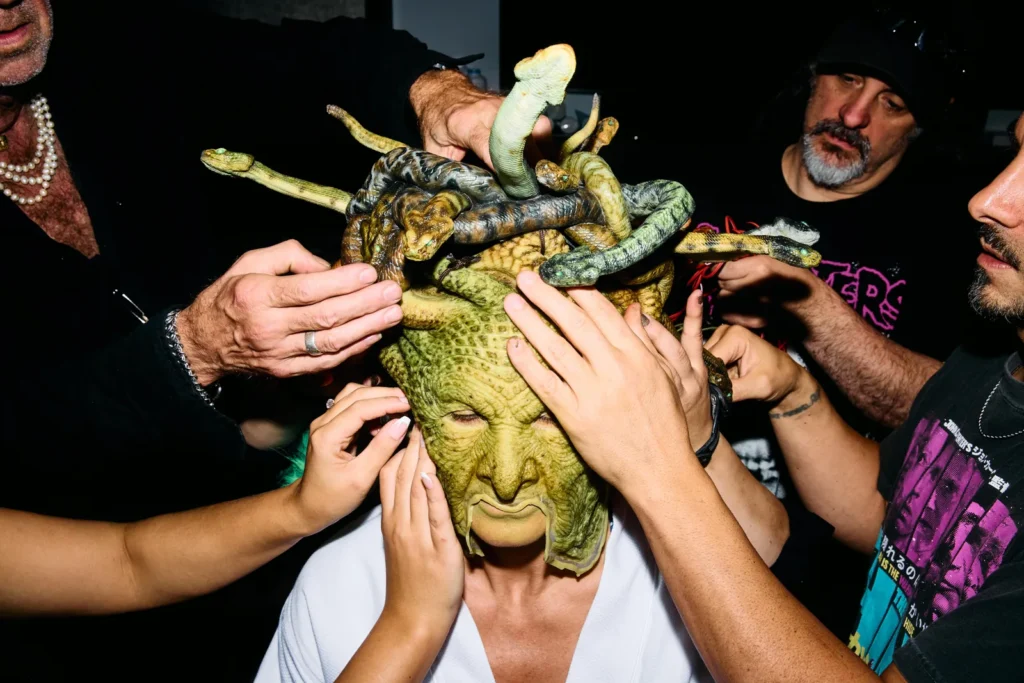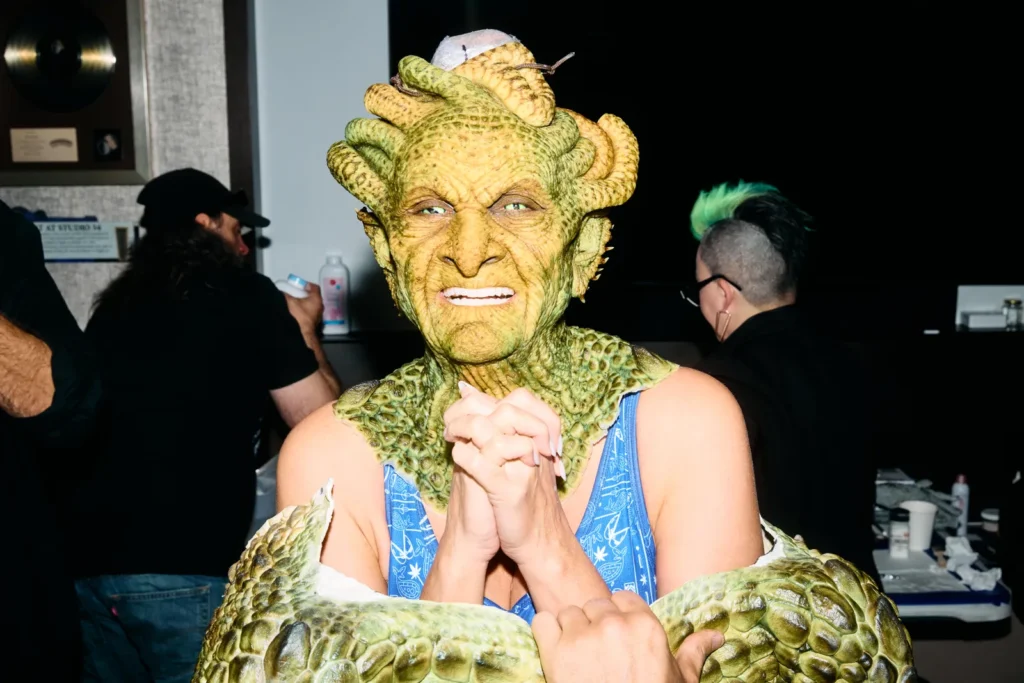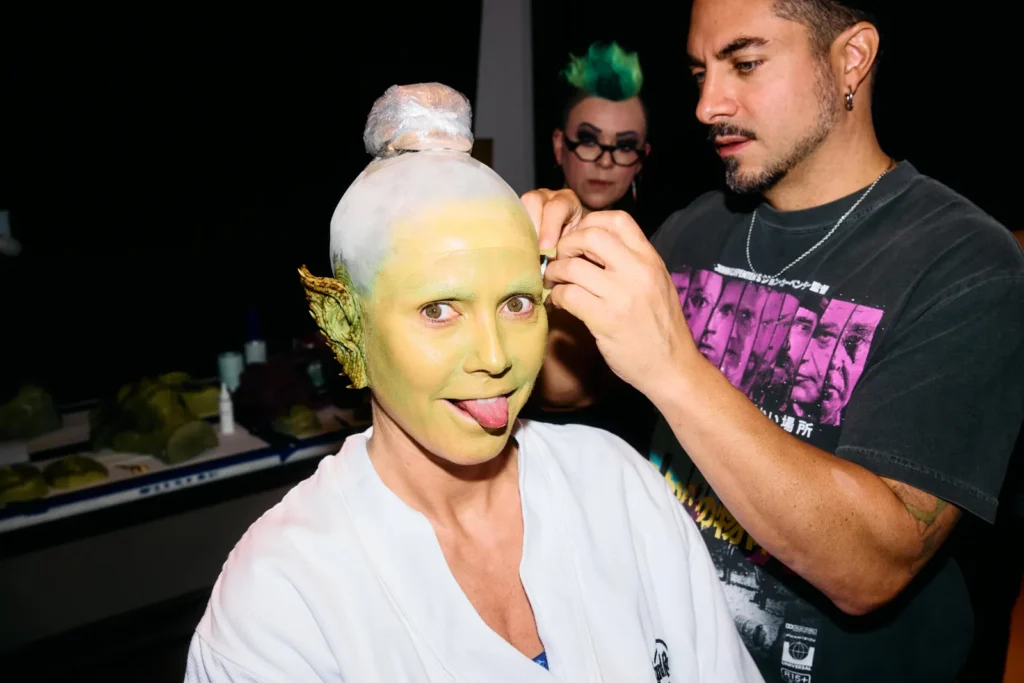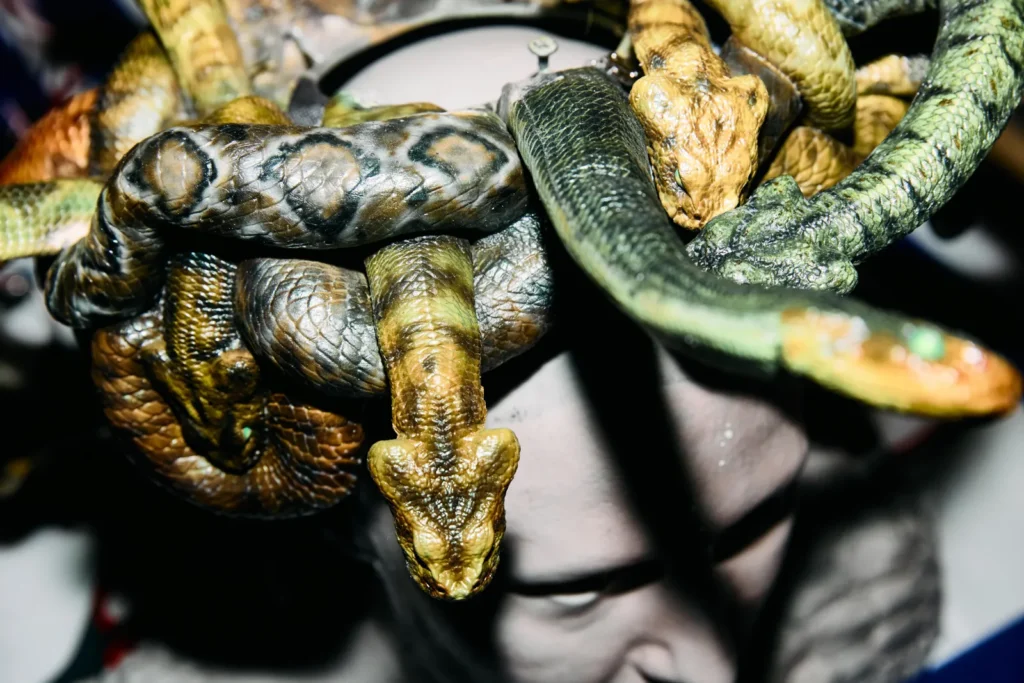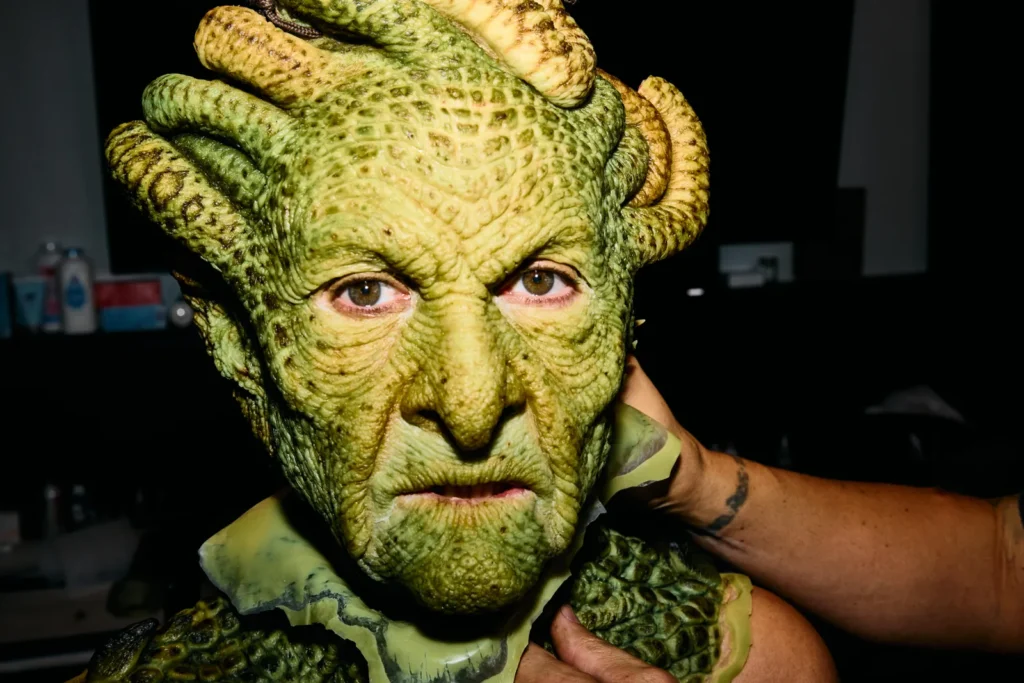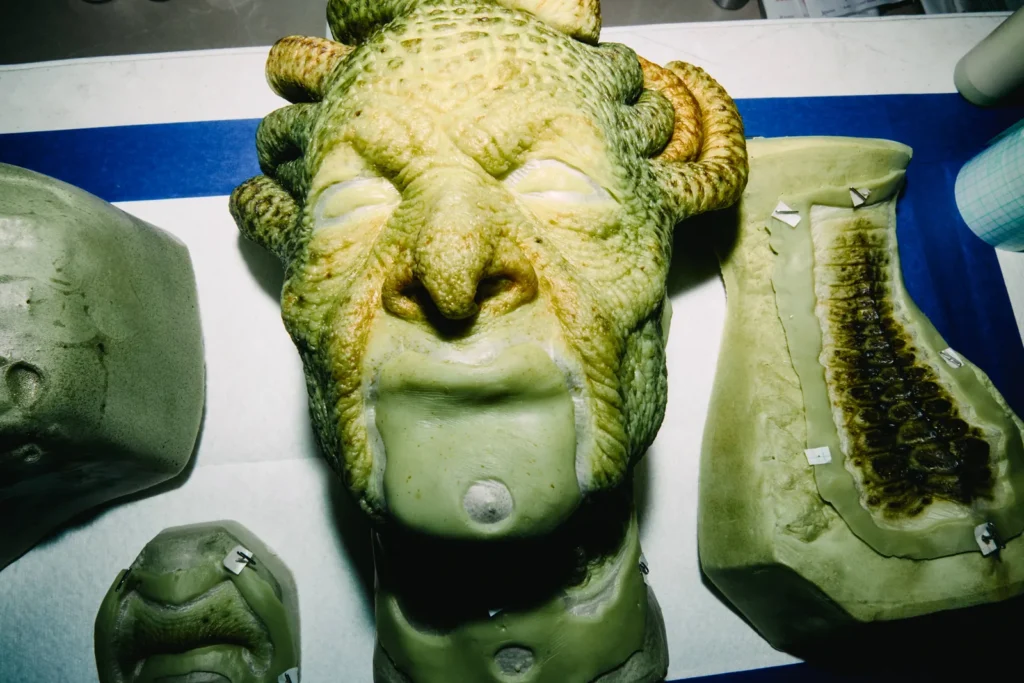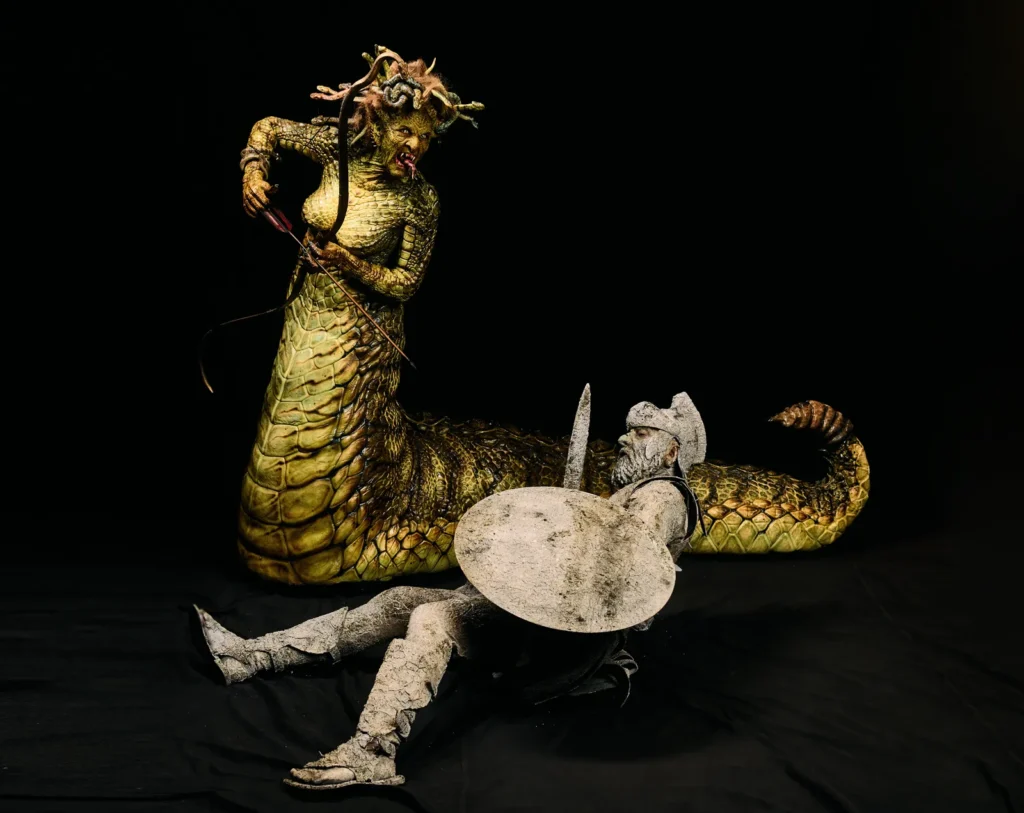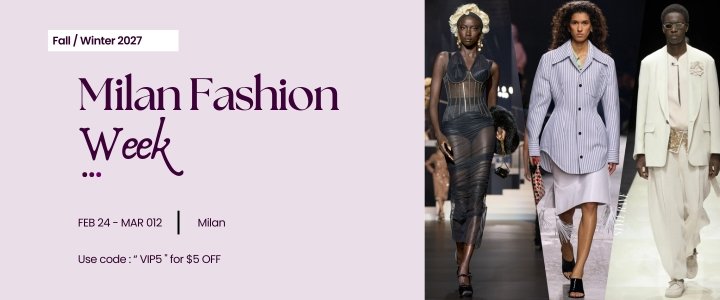When Heidi Klum‘s mechanical snakes began writhing atop her head at Thursday night’s Halloween party, few of the star-studded guests likely considered the small army behind them. Fifteen artisans. Six months of production. Nine hours in the makeup chair. An Emmy-winning special effects team with multiple Oscar nominations. For Klum’s 24th annual Halloween transformation—this year, as Medusa—the spectacle wasn’t just elaborate; it was a multi-tier economic engine involving fabricators, painters, mechanical engineers, and prosthetics experts whose livelihoods increasingly depend on celebrity commissions.
Welcome to the specialized economy of celebrity stunts, where Halloween costumes command Hollywood-level budgets and production timelines that rival film shoots. As Klum’s hand-painted scales and custom split tongue made their debut at New York’s Hard Rock Hotel, they illuminated a growing industry largely invisible to the public: the artisans, engineers, and craftspeople who transform celebrity whims into viral moments, one meticulously engineered feather, fang, or mechanical appendage at a time.
The financial architecture underlying Klum’s Medusa costume reveals the true scope of this cottage industry. Beginning production in April—a full six months before the October 31st reveal—the project required coordination across multiple specialized disciplines. Mike Marino, the special effects artist who led the team, brought credentials that speak to the caliber of talent now gravitating toward celebrity commissions: his team’s recent Emmy win for The Penguin and multiple Oscar nominations position them at the apex of practical effects artistry. These are not hobbyists or part-time makeup enthusiasts. They are industry professionals whose expertise traditionally served film and television productions, now increasingly available to the highest bidder in the celebrity attention economy.

This shift represents a fundamental reallocation of creative resources. The same artisans who might once have dedicated their careers exclusively to cinema or theater now find lucrative opportunities in one-night spectacles designed primarily for social media documentation. The economics are compelling: a single celebrity costume commission can match or exceed the compensation for weeks of film work, with considerably more creative freedom and none of the prolonged production schedules that characterize traditional entertainment projects.
The technical complexity of Klum’s costume underscores why such specialized talent commands premium rates. The independently-moving mechanical snakes atop her head required not just sculptural artistry but functional engineering—systems that could operate reliably under the heat of stage lights and the duration of a multi-hour party. The hand-painted details demanded the precision of fine art restoration work. The custom split snake tongue needed to integrate seamlessly with Klum’s real anatomy while remaining comfortable enough for extended wear. Each element represented a distinct technical challenge requiring specific expertise, from animatronics to prosthetic application to cosmetic artistry.
The nine-hour makeup application itself illuminates another dimension of this specialized economy: time. While most consumers associate Halloween preparation with an evening’s effort, celebrity-grade transformations operate on film production timetables. Nine hours approaches the length of a standard shooting day, requiring not just the endurance of the subject but the sustained focus and precision of multiple artists working in concert. This time investment alone—billable at rates commensurate with Hollywood production standards—likely represents tens of thousands of dollars in labor costs before materials, pre-production, or engineering are factored into the equation.
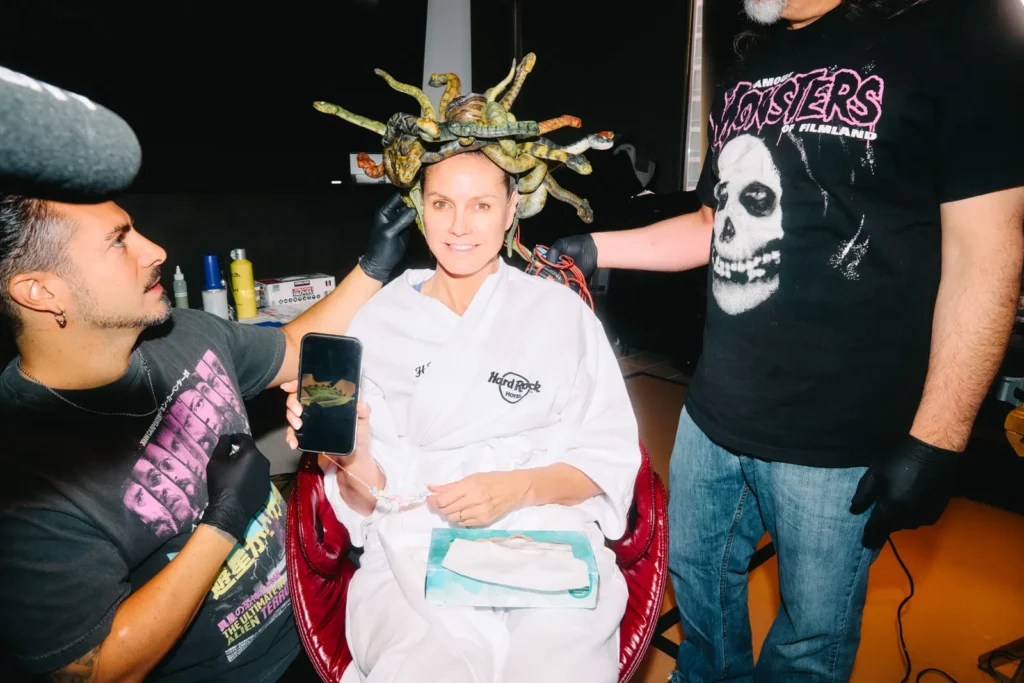
What emerges is a portrait of professionalization that has fundamentally transformed costume culture at its highest echelon. Klum’s choice to reimagine Medusa as a “modern” interpretation of a mythological figure required consultation with artists who could execute that vision across multiple technical domains. The result was not merely a costume but a functioning mechanical sculpture, a wearable special effect that pushed the boundaries of what temporary transformation can achieve.
This professionalization creates a cascade of implications. For the artisans themselves, celebrity commissions offer creative latitude and financial reward that can exceed traditional entertainment industry work. The visibility of a project like Klum’s Medusa costume—documented extensively across social media and entertainment press—provides portfolio material that can launch careers or secure future commissions. Mike Marino’s team leveraged their Emmy and Oscar credentials to access this opportunity; successful execution will, in turn, enhance their positioning for both celebrity and traditional entertainment projects.
Yet this same dynamic illuminates a growing bifurcation in cultural participation. As celebrity Halloween costumes require six-month timelines and teams of fifteen professionals, the gap between what public figures produce and what average consumers can realistically attempt widens into a chasm. The “lazy” costume attempts that Klum’s event implicitly rejects aren’t just matters of effort—they represent the natural ceiling of what individuals with limited time, budget, and access to specialized skills can achieve. When the cultural benchmark for Halloween creativity requires Emmy-winning special effects teams, participation becomes stratified by economic class in ways that extend beyond mere costume quality into fundamental questions of who gets to meaningfully engage with shared cultural moments.

The broader cultural implications extend to how we understand celebrity relevance in the digital age. Klum’s 24-year commitment to this annual spectacle has transformed what might have been a simple party into a cultural calendar event where, as observers note, Halloween is not officially complete until her reveal. This staying power—achieved without selling products, launching shows, or promoting projects—demonstrates the value of consistent, over-the-top creative investment. But it also reveals how celebrity culture increasingly operates as a performance economy where relevance is maintained through escalating spectacle, each year’s costume implicitly competing with the last to justify continued media attention.
For the specialized professionals who make these spectacles possible, the rise of celebrity costume culture represents genuine economic opportunity. Film and television production remains cyclical and competitive; celebrity commissions offer an alternative revenue stream that can sustain businesses during industry downturns. The technical skills required—prosthetics, animatronics, cosmetic artistry—transfer seamlessly between entertainment production and celebrity spectacle, allowing artisans to diversify their client base while maintaining craft excellence.
Yet this opportunity comes with its own precarity. As celebrity costume culture becomes more elaborate, expectations escalate. What sufficed for attention five years ago may barely register today. The pressure to innovate, to incorporate new technologies, to achieve ever-more-spectacular transformations, creates an arms race dynamic where artisans must continuously push technical boundaries to remain competitive for future commissions. The same economic forces that create opportunity also demand perpetual escalation, with unclear sustainability horizons.
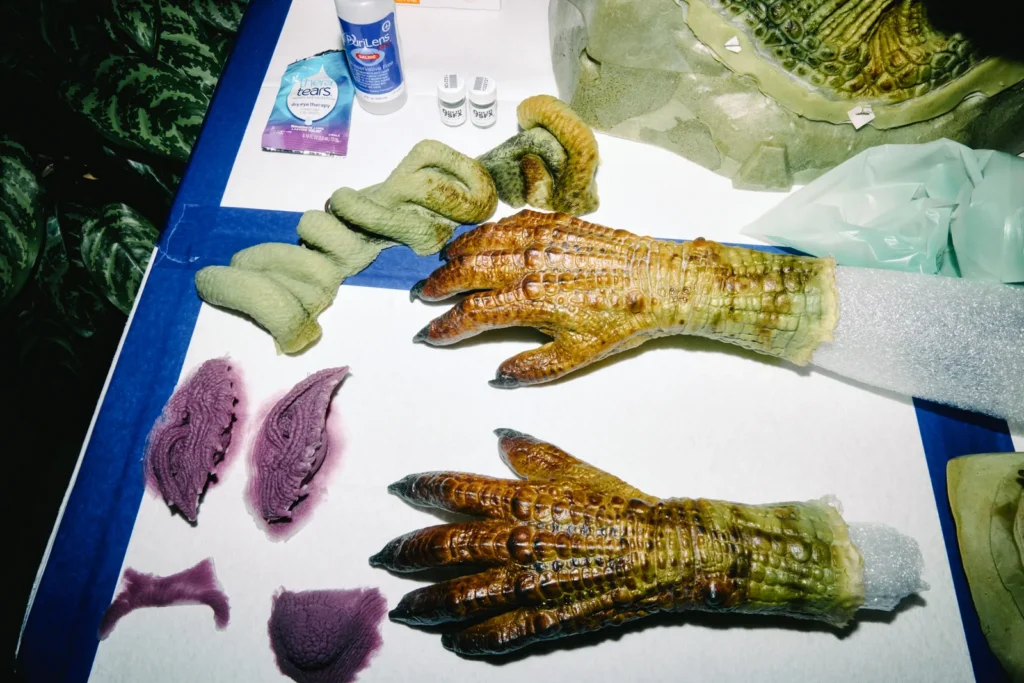
Klum’s Medusa costume, then, functions as more than personal expression or Halloween celebration. It serves as a case study in how wealth and celebrity access reshape cultural participation, how specialized talent flows toward the highest bidder, and how spectacle itself has become a distinct economic sector. The fifteen artisans, six months of production, and nine hours of application reveal an industry that exists in the shadows of celebrity visibility—essential to the spectacle yet largely anonymous, highly skilled yet precariously dependent on the continuation of cultural trends that prize elaborate transformation over accessible participation.
As Halloween evolves from community tradition to tiered cultural performance—with celebrities operating at production budgets that dwarf typical consumer spending—the specialized economy behind these spectacles will likely only grow. The question is whether this professionalization enriches the cultural landscape by elevating craft, or whether it fundamentally alters the nature of shared cultural moments, transforming participatory traditions into spectator events where most observe the creativity that only significant capital can buy.


